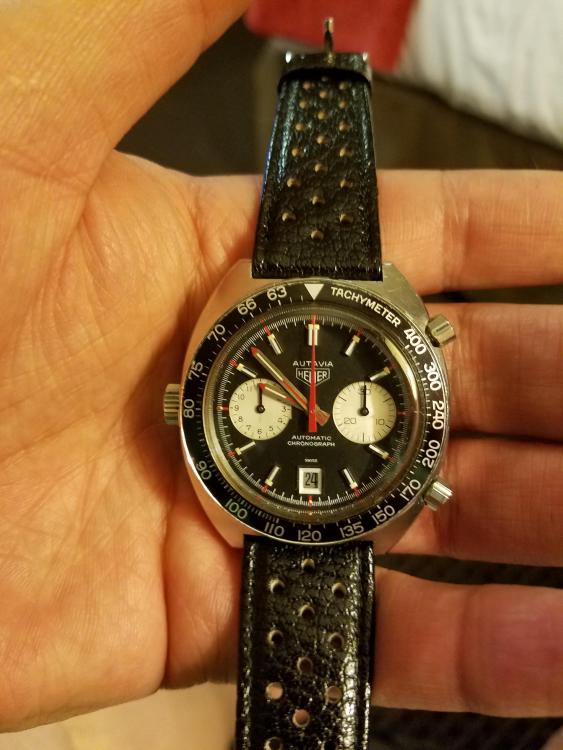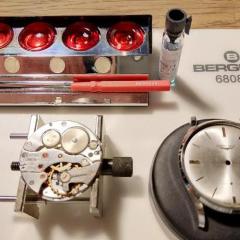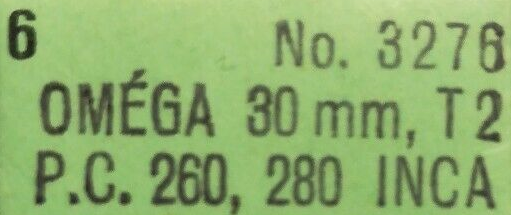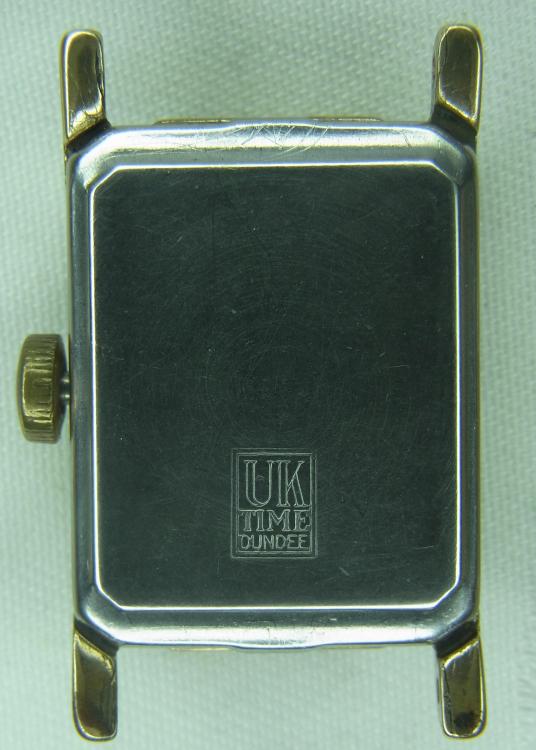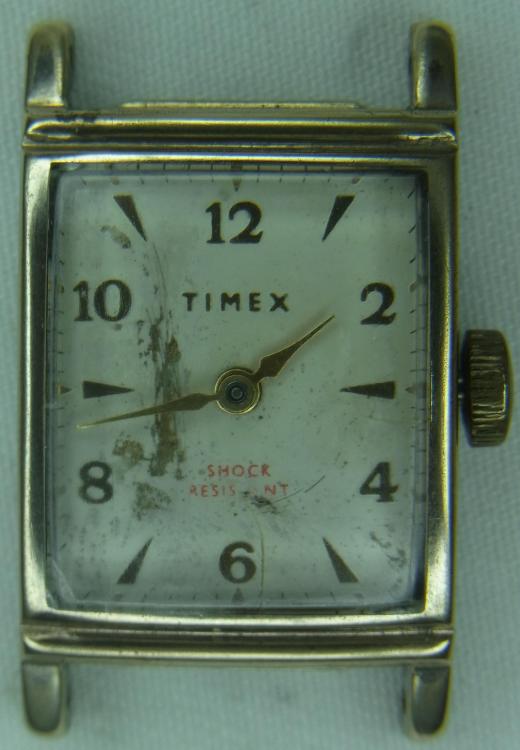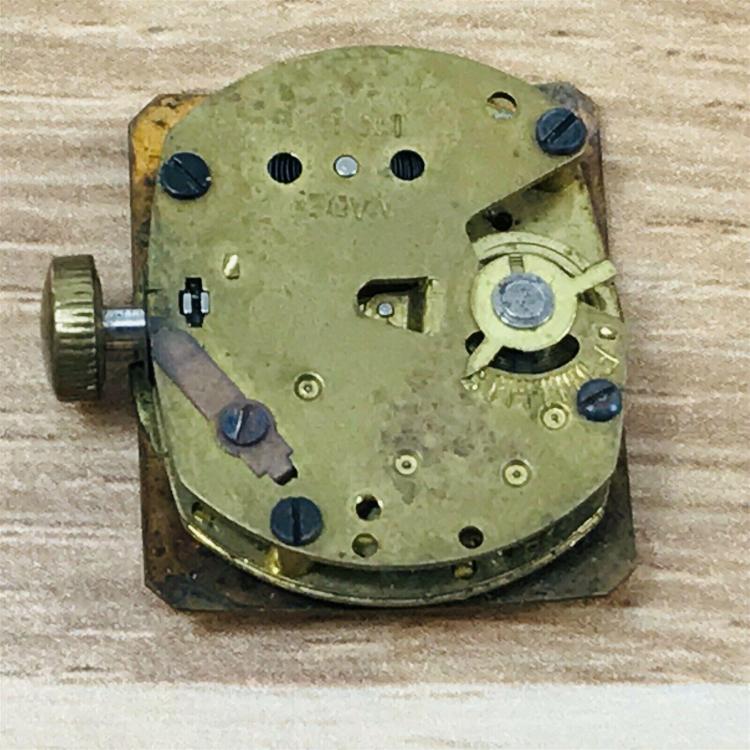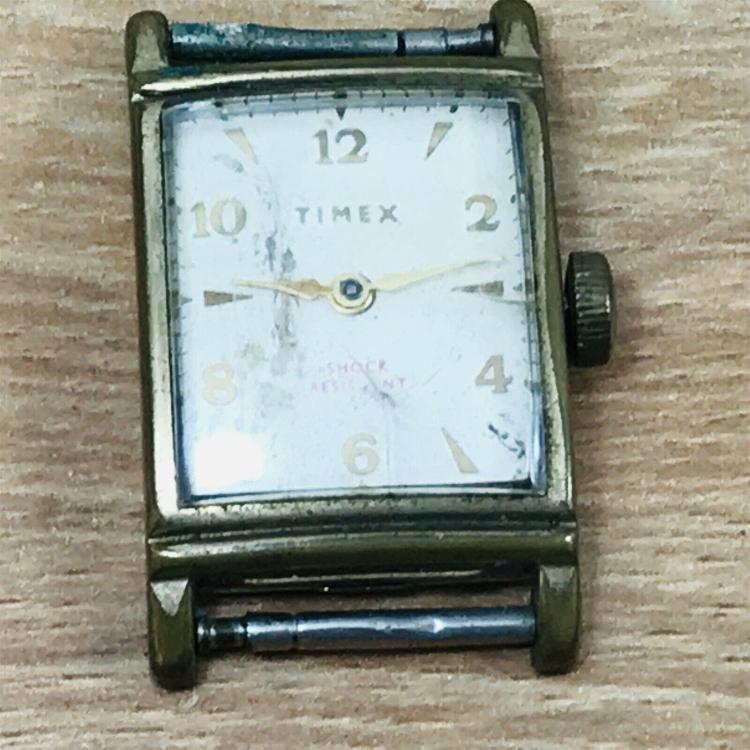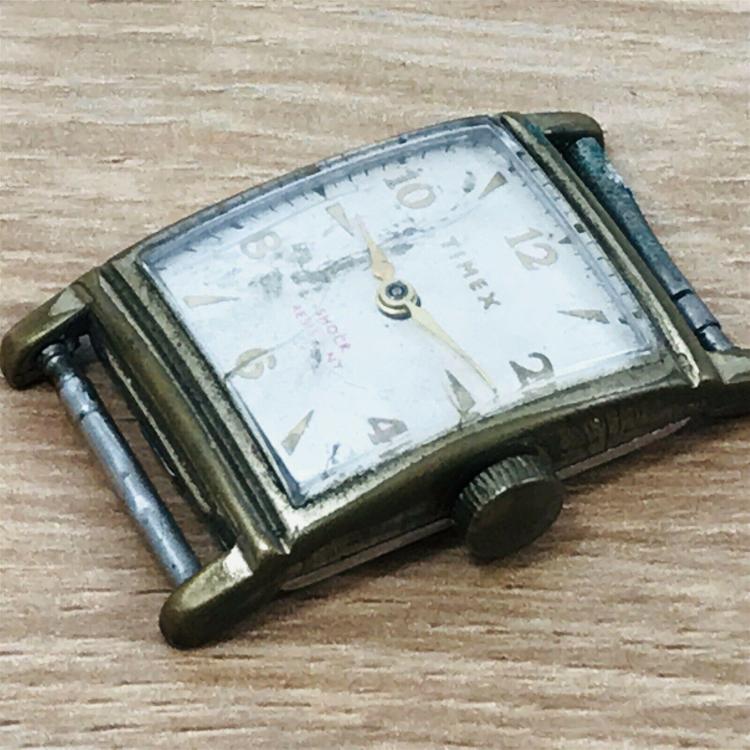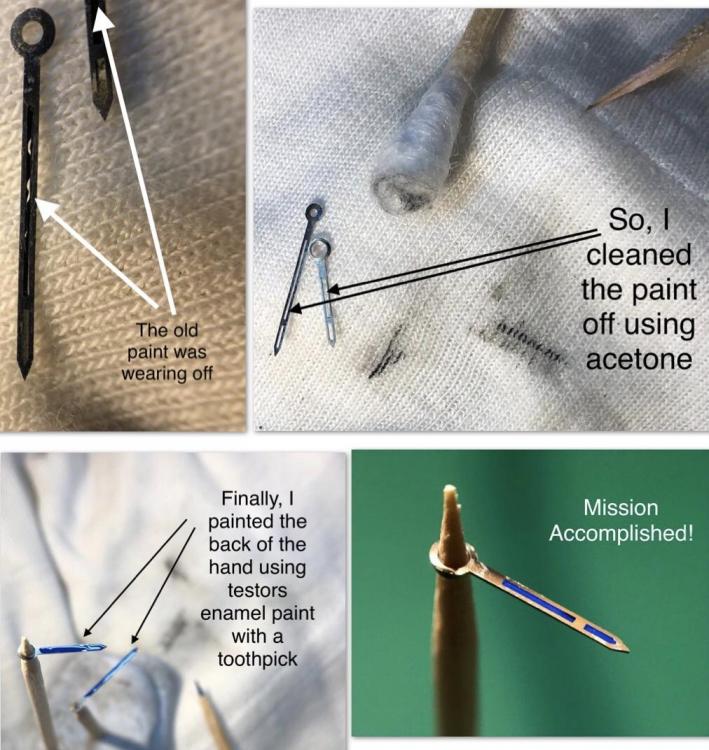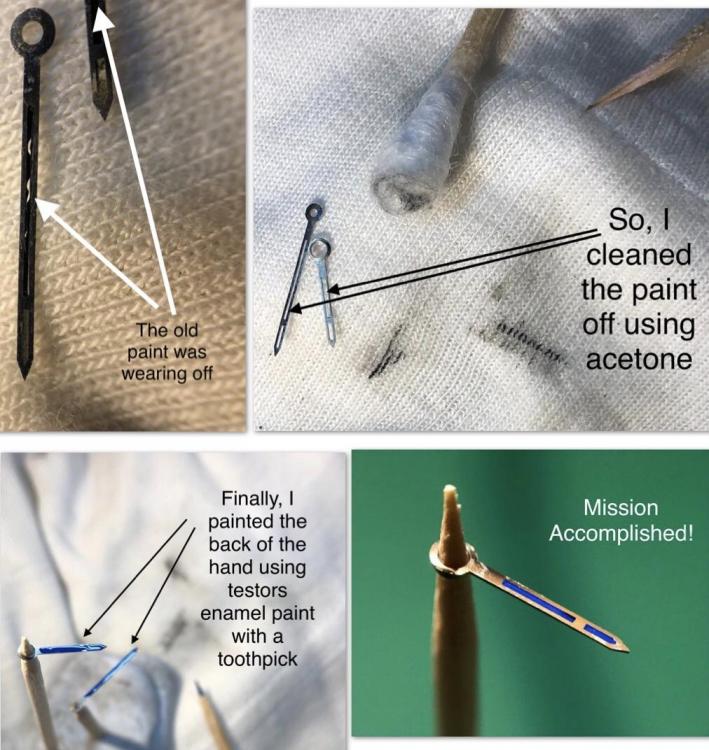Leaderboard
Popular Content
Showing content with the highest reputation on 08/19/19 in all areas
-
9415 is a thixotropic grease. It reduces drastically in viscosity instantly at the shear point when objects it's applied to are in motion, and returns to it's thicker state when at rest. It's good stuff.3 points
-
A finer oil would not stay in place due to the centrifugal and highly inertial motion of the escape wheel. I think 9010 was recommended before the introduction of better products in terms of adhesion, 941 and 9415, which in fact is a grease. If you want to try the latter send me a PM with your address.3 points
-
I think, as mentioned, the OP broke it while trying to open the barrel to "service" the MS - that's never needed on modern Seiko, but something that beginners like to do anyway.2 points
-
I think you'll find the link below interesting. As mentioned above it used to be 9010 was recommended on pallet stones even Seiko up until relatively recently was using it. Then 941 came into existence interestingly enough it's slightly lighter in viscosity than 9010. Then much later on 9415 classified as a grease for higher frequency Escapement's. 9415 has interesting properties it's a grease so it stays in place but on the impact it becomes fluid. Then if you look at current tech sheets they probably grasp that watchmakers are cheap and it's basically either or for 941 or 9415. Then I'm attaching a PDF Starting on page 13 is lubrication of a lever escapement. This is where things get really complicated 9415 has a problem if it is applied too heavy. So they explain how it has to be applied very very thinly. You'll also notice another term Lubrifar which is really just Molybdenum disulfide ETA And probably others have been using it for quite a number of years on the escape wheels. http://www.moebius-lubricants.ch/en/products/oils 8645_WI_40_rules for lubrication.pdf2 points
-
I've been making some screw recently out of 316 steel but my stalling point has been polishing the screw heads. After I cut the slot I have been filing them flat then rubbing them in diamond paste. I apply the paste to an aluminum sheet and start with 45 micron diamond paste and rub the screw heads in it. Clean them then repeat with 8 micron and 0.25 diamond paste. However the finish is not good. I'm aware if you buy sets of diamond paste there are 7 grades to go through so it might be I'm jumping sizes to quickly but as the paste is expensive I thought I'd check here first. From start to finish how long should it take to polish a screw head. This is quite frustrating because I feel like I've go the hard bit down but the part that should be easy is not working.1 point
-
1 point
-
I just want to think the admin and everyone else for letting me join his awesome forum and site, I have an old Seiko that I am wanting to restore back to new maybe better with the new parts that you can get for them now, I hope this is where I am supposed to announce and introduce myself? Thank you Rob1 point
-
Barrel and center wheel are different across A, B and C versions, details on my sheet: https://docs.google.com/spreadsheets/d/e/2PACX-1vRN2UULQKTfKmhRStZhDdIOIQrqd6sPB-g6x2SKyQQjOvTBjG_7TQXQhAT4f1WqAX5QAPkIimi-3jqd/pubhtml I think only the C version is interchangeable with the NH3x. I am ready to send one to Giuseppe, but if he wants to buy from Cousins I suggest that for 15 pounds more he gets a complete new mov't, and use the current one for practice, resell or even build a custom watch.1 point
-
Perfect!!! I was searching under NH35A. They indeed have it. £16.90. I will order then. Thanks a lot!1 point
-
Cousinsuk has it . Often the 0 isn't used when seaching seiko parts . i looked at 7S26 movement . That uses the same barrel. And you are not alone. Did the same on my first 7005 Seiko . Have the same construction. Have barrels if you need.1 point
-
Hi Giuesppe. Welcome to WRT forum. Looking forward to making friends with you. We share first name. Giueseppe= yosef= joseph , in diferent dialogue. Regards joe1 point
-
The thing is, a barrel complete (e.g. 201.420) retail is £17.55, compare to £31.95 for the complete mov't. (prices excluding VAT). It just doesn't make sense to stock, or even buy, the spare part.1 point
-
This is how I went about polishing clock screw heads. You need a lathe or a screw head-polishing tool that fits in a vice. Start by removing the bur with a flat needle file not to course. Then use emery sticks of various grades down to the finest they have, finish off with the finest crocus paper. Clean the screws. Those screws would be ready to blue. That is how good they will be.1 point
-
1 point
-
Not only will it not run well (if indeed it runs at all), it runs the risk of damaging the teeth of whatever it meshes with.1 point
-
No, it will not run well. Seiko barrels, as often mentioned are not meant to be opened. If you have trouble finding a replacement PM your address and I'll send an used one.1 point
-
Try here https://www.timezonewatchschool.com/WatchSchool/Glossary/glossary.shtml or this for the same thing in pdf. TZIllustratedGlossary.pdf1 point
-
I missed your post with the balancestaffs.com 30T2RG = OME26.5 BS4132 (RONDASTAFFS1856) (A=305) This also has an early inca version BS4133 (RONDASTAFFS4187) (A=305) 30T2PC = OME260 BS4149 (RONDASTAFFS3276) (A=329) and now I see what you mean, here they say you could use the slightly longer version too BS4148 (RONDASTAFFS1858) (A=332) which I'm not so sure of, even if the staff lenght isn't that far off it might affect the movement of the balance wheel since the pressure from the inca block springs would be slightly higher all time and one might not have any endshake at all. I would go with the original lenght of these.1 point
-
A gents "UK Time Dundee" on the bench today. This is one of the earlier Dundee Timex watches as it has the "UK Time" branding, so probably mid to late 1950s This is what arrived in the post. Not very clean and that crystal is almost certainly made from pure unobtanium. The "works" are stamped Made in Britain, but later versions often had Made in Scotland on them. I have it running, but the winding mechanism is badly worn (who would have thought it, looking at that crown ), so it feels a little "gritty" while winding. I used UV cure phone glass glue to close up the cracks in the crystal, but it really needs to be replaced. None the less it ticks and tells the time, and I've removed the case klingons, and given everything a good shine, so it is a whole lot more presentable. I'll let it run for a bit and regulate it. Another piece of local history joins the 404 collection.1 point
-
it is applicable to the fluid attached to wheel by virtue of its surface tension and viscosity. The sudden stop and restart of the escape wheel makes so that the mass of the lubricant tries to continue its condition of motion, or lack of it. The less adhesion, the more mass, the more instantaneous acceleration of the wheel (characteristic of high-beat mov't) , the more the fluid will tend to leave the pallet face. and spread around. Not good. I would not underestimate the research and science that is behind current watch lubricants. Even if you can get perfectly acceptable results with these of one or two generations ago that doesn't mean that the accessible alternative isn't better.1 point
-
1 point
-
1 point
-
Won't be in the shop till Tuesday probably, but will say I've done a bunch of overcoil springs from scratch and only rarely use these specialized tweezers. There are other ways to raise the coil and I usually form the curve with two #5s. The special tweezers are useful when doing several or more of the same, you can set the coil raising ones up to repeat well, and find the curving ones that suit the form you're doing. I remember visiting Parmigiani back turn of the century and there was a lady doing a really small caliber overcoil, I think she took about 5 minutes to time it with an old school vibrating tool and like 30 seconds to raise and form the coil with the special tweezers. It'd be a half day work with the same equipment for a competent hairspring guy who didn't do them all day like she did.1 point
-
You should have posted in "chat about watches". Check attached service sheets, parts are named in multiple languages. You can also buy CDs of (old) watchmaking books for cheap on Ebay, parts name don't change, there can be some regional variation whci doesn't matter much. 3400_ETA 2390,2391.pdf 2824-2.pdf1 point
-
1 point
-
1 point
-
1 point
-
I never cleaned the balance in the cleaning machine. Always cleaned it in Ronsonol lighter fluid. One Dip is not needed. The lighter fluid is way better and it won't harm pallets or impulse pins that are held with shellac.1 point




